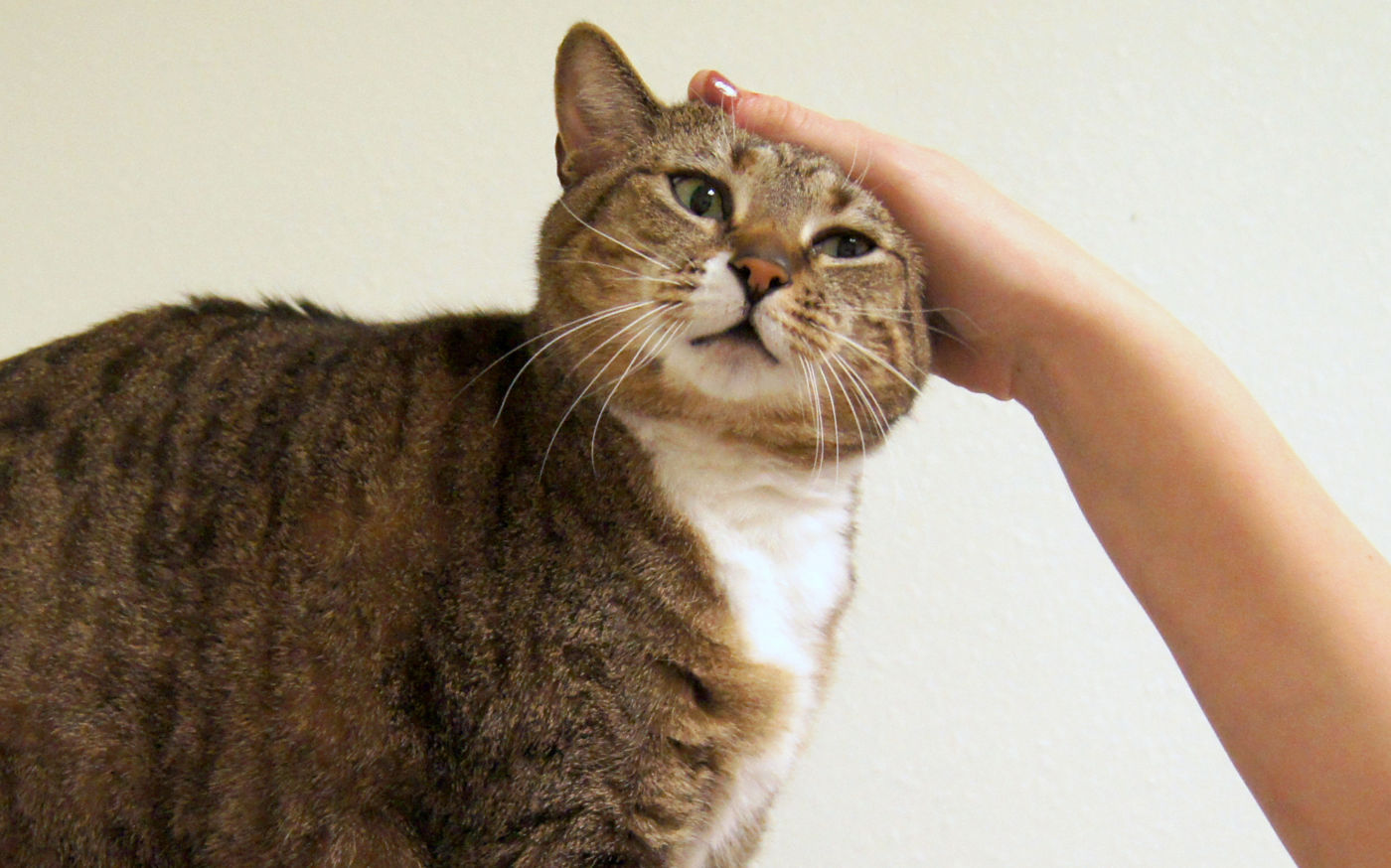I recently adopted a cat who I was told was affectionate. However, when I go to pick him up and snuggle him, he runs away from me and even sometimes scratches. How can I get him to love me more?
Frustrated in Florence
Dear Frustrated,
Most of us were taught to reach down, stroke the cat with palm from head to tail and repeat. But if you could ask cats, they might tell another story.
The fact is, all cats are different. Each cat has his or her own preference for touch, their touch threshold.
Some like to be petted on the head and some don’t. Some like to be scratched at the tail while some can’t stand it. Some like a strong touch while some like a very light one.

We have even seen big differences in the touch threshold of very young kittens. That’s all the more reason, especially if you’ve just adopted an adult cat who already has a lifetime of touch preferences, to learn their likes and dislikes first.
Cats are a small animal in a big world. Looming over them can feel like they are about to be hurt by a predator. Cats who have had bad experiences may see hands as the most threatening part of a human.
All cats appreciate having a say in how they are petted. You can give them that say by paying close attention to their body language.
If cats freeze, flatten their ears and close their eyes tightly, they are giving you clear messages that your petting technique could be improved.
Try getting down on the cat’s level at first. This will make you seem less of a predator.
Let the cat come to you and rub on your legs, or arms if you’re sitting down. In cat language, this means they trust you enough to behave like another cat friend.
The best technique for petting a new cat is to start by simply asking if the cat wants to be petted. As Jackson Galaxy says, “Let the cat pet you!”
Offer a finger or knuckle at their eye level. Then listen for the answer by waiting for positive body language.
Cats who actually want to be petted will move toward you, even if it’s just a slight lean in. Their eyes will be soft, with normal sized pupils (unless it’s low light).
A slow blink will tell you they feel safe with you. Their ears and whiskers will be forward. If they choose to touch you, you’ve been given the green light.
Many cats do not like to have their heads patted but enjoy starting at their shoulders. Try a very light touch at first.

If the cat seems especially sensitive to hands, try petting with the back of your hand. That can also feel less threatening.

The best indicator a cat likes what you’re doing is pushing back a little when you offer your hand. When you get to the base of the tail and the cat pushes back up into elevator tail position, rest assured you’ve learned their petting style!

They will also tell you when they don’t like what you’re doing. Overstimulation can happen with any cat, but is especially something to watch for when you’re just getting to know someone.
Look for these behaviors in cats with a low threshold for petting:
- Restlessness
- Skin rippling
- Ears flattening or flicking
- Tail thumping or thrashing
- Turning head toward the petting
If any of those things happen, stop petting! Wait for the cat to choose to pet you. If that doesn’t happen, wait for another petting session.
If the cat gets overstimulated enough to nip, remove your attention completely, either by walking away or by gently putting the cat off your lap. Consistent responses to nipping by everyone in the house can stop a cat from doing that.
Do not keep petting once the cat gets in nip mode. You don’t want to inadvertently reward the cat for nipping or biting.
Many cats prefer not to be picked up, especially if you have not yet built up trust. Think about what it must feel like if you’re a 10-pound cat to be suddenly scooped up by a creature 10-20 times your size and be held in the air many times your height. No wonder they sometimes struggle!
If you want to pick up a cat, start by getting him or her used to being on your lap (food rewards don’t hurt either!). Pick up the cat from your lap to your shoulders, letting the back legs rest on one arm while supporting the front with the other.
Look for signs that the cat is enjoying this, like a relaxed body, soft eyes, leaning into you. Build up that trust first.

Then you can gradually stand up, adding height to the knowledge that you aren’t going to drop anyone. Trust is everything with a new cat.
Of course, purring and kneading (making biscuits) can also go with rubbing and pushing back into your hand. In cat language, that is the highest compliment of all.







